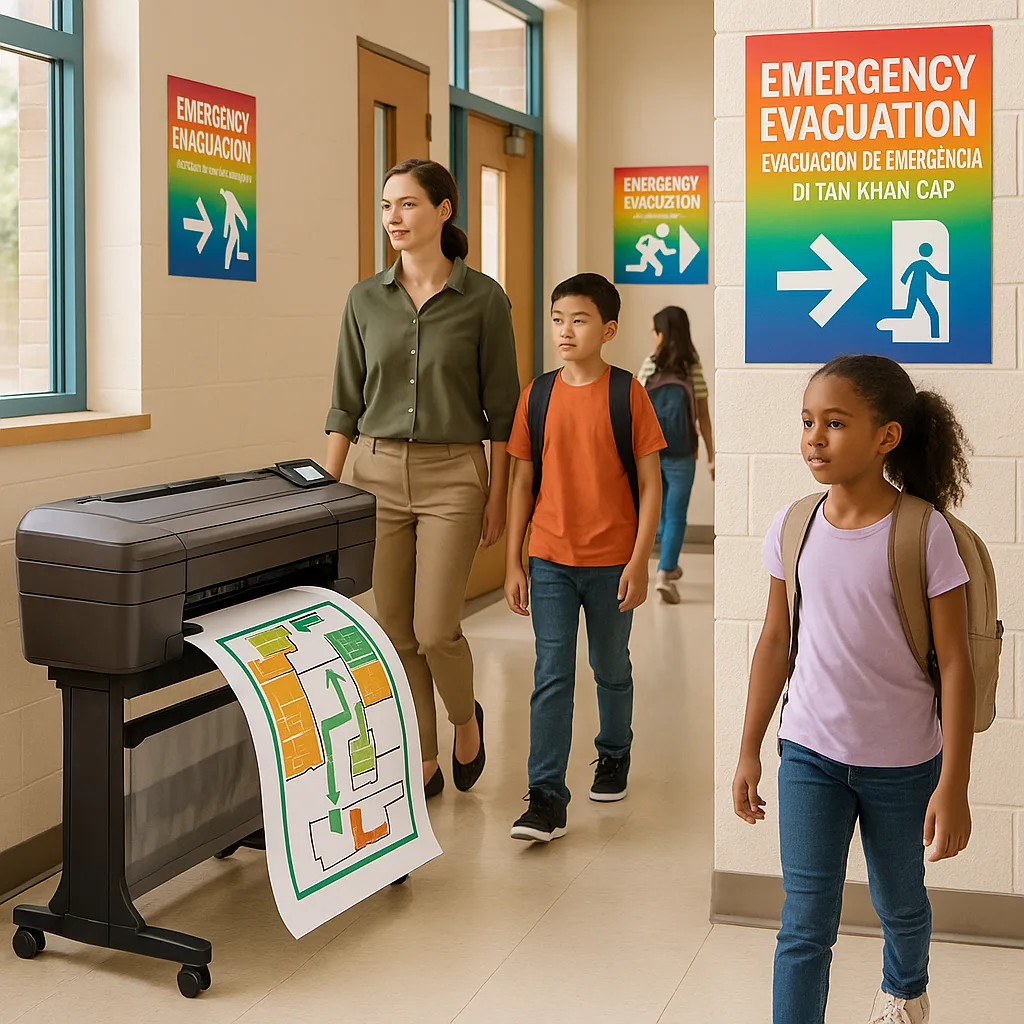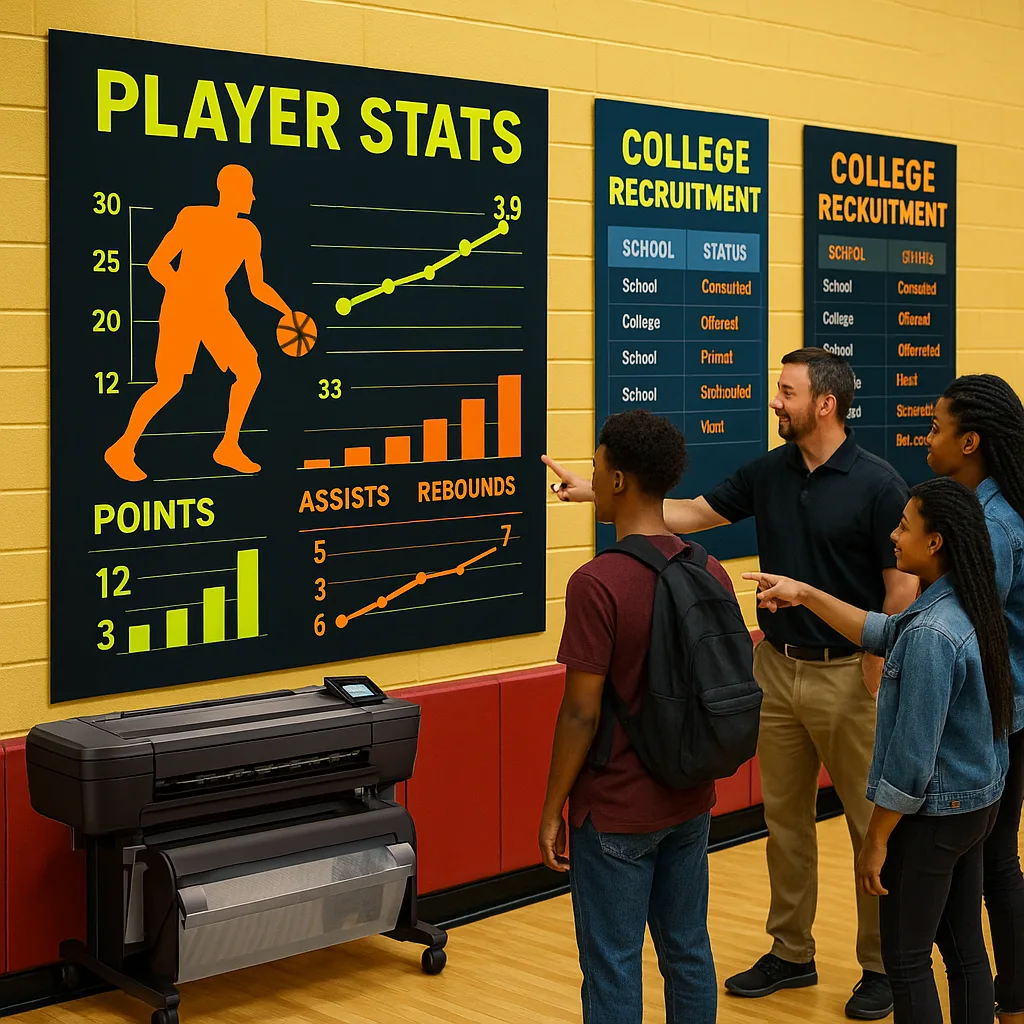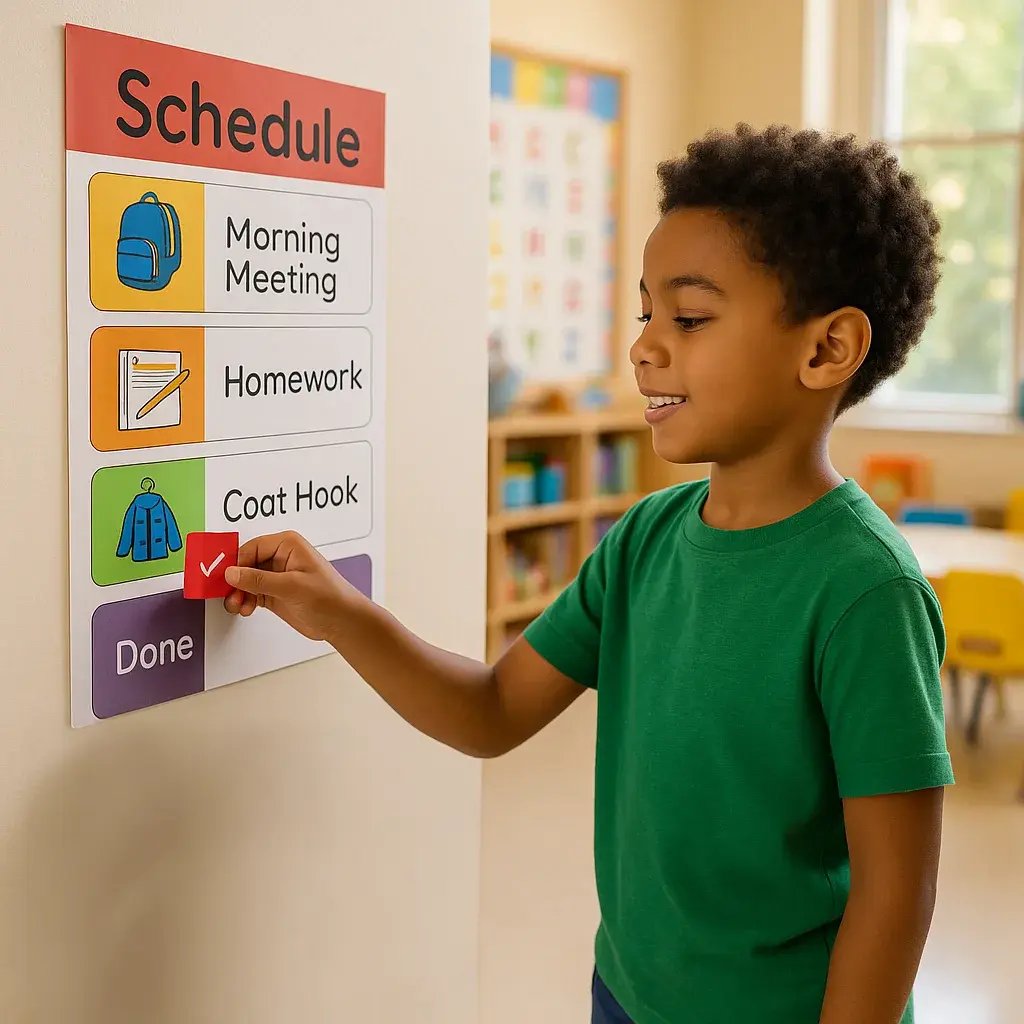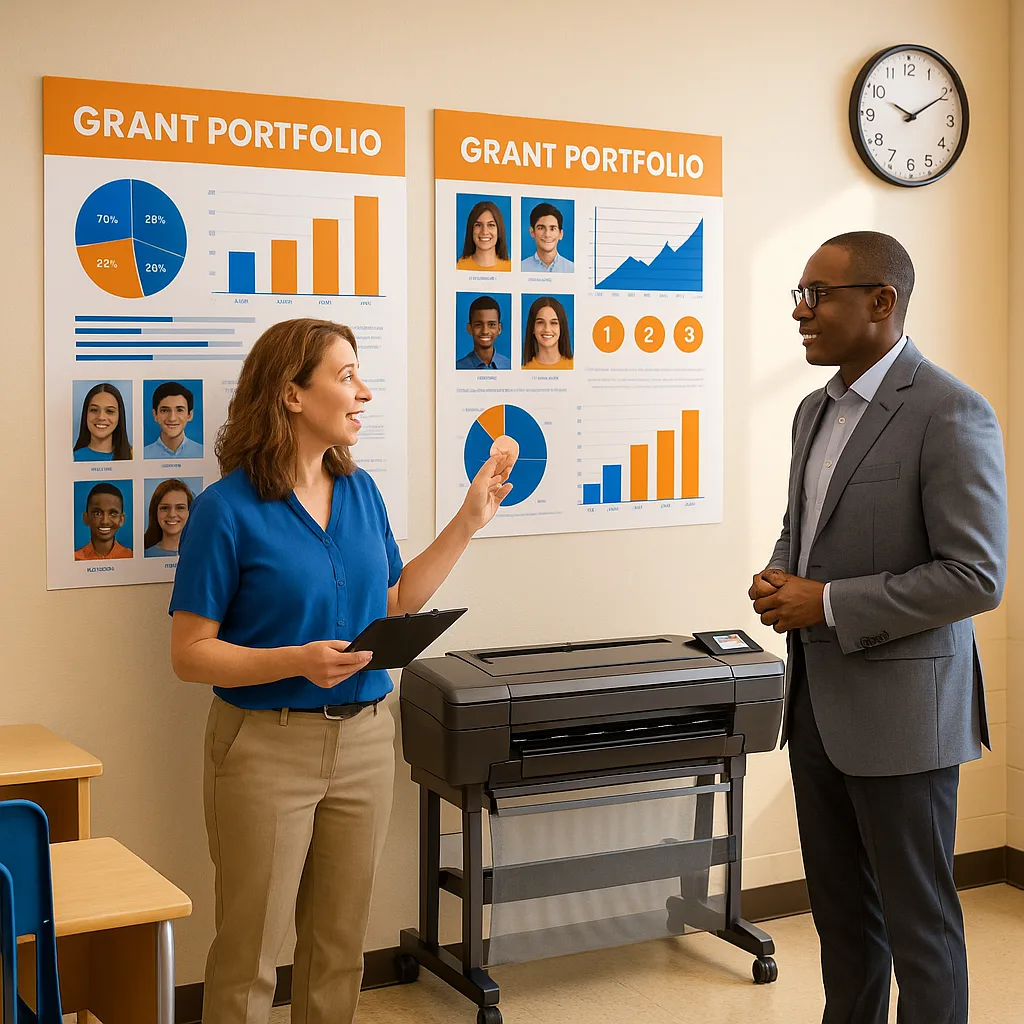
Poster Maker for Schools Emergency Plans | 30-Day Guide
California schools face an increasingly complex array of emergency scenarios—from earthquakes and wildfires to active threats and severe weather events. Creating a comprehensive visual emergency communication system within 30 days might seem daunting, but with the right poster maker for schools emergency readiness tools and strategic planning, your campus can be prepared before disaster strikes.
Building Your Poster Maker for Schools Emergency Readiness System
Recent emergency response data from California’s Office of Emergency Services reveals that schools with comprehensive visual communication systems reduce evacuation times by an average of 40% and improve family reunification efficiency by 65%. Furthermore, multilingual visual aids ensure that 100% of your school community receives critical safety information, regardless of language barriers or special needs.
Week 1: Assessment and Planning Foundation
Before creating your first emergency poster, conduct a comprehensive vulnerability assessment of your campus. California Education Code Section 32280-32289 mandates specific safety planning requirements, and your visual communication system must align with these standards.
Conduct Your Campus Safety Audit
Begin by walking every corridor, classroom, and outdoor space with your safety team. Document areas requiring emergency signage, noting specific hazards, evacuation routes, and assembly points. Pay particular attention to spaces serving students with disabilities, English learners, and areas with limited cellular coverage where visual communication becomes paramount.
Essential Emergency Poster Categories
Your 30-day implementation requires systematic creation of these critical visual elements:
Primary Evacuation Maps: Large-format (36″ x 48″) weatherproof maps showing primary and secondary evacuation routes, assembly areas, and ADA-accessible paths. Include tactile elements for visually impaired students.
Multilingual Instruction Posters: Create sets in your district’s primary languages (typically English, Spanish, Vietnamese, and Mandarin in California) with universal pictographs for immediate comprehension.
Reunification Point Signage: Weather-resistant 24″ x 36″ posters with clear alphanumeric coding systems that match your emergency response plan’s family reunification procedures.
Shelter-in-Place Guides: Classroom-specific posters detailing lockdown procedures, safe zones, and communication protocols during various threat scenarios.
Week 2: Design and Compliance Standards
California’s Title 24 accessibility standards and federal ADA requirements mandate specific design elements for emergency signage. Moreover, your poster machine maker system must produce materials meeting these stringent requirements while remaining visually clear under stress conditions.

ADA-Compliant Design Specifications
Visual Contrast Requirements:
Typography Standards:
• Sans-serif fonts only (Arial, Helvetica)
• Minimum 1″ character height at 10′ viewing distance
• 3:5 stroke-width-to-height ratio
• No italics or decorative fonts
• Mixed case for readability
Research from UC Berkeley’s Center for Accessible Education demonstrates that high-contrast emergency signage with pictographs increases comprehension speed by 250% during stress situations. Additionally, incorporating tactile elements and Braille annotations ensures full accessibility compliance while serving your entire school community.
Weather-Resistant Material Selection for Poster Maker for Schools Emergency Readiness
California’s diverse climate—from coastal fog to desert heat—demands specific material choices for outdoor emergency signage. Your poster machine maker must handle these specialized media types:
UV Resistance
2-year outdoor rating
Tear Strength
Heavy-duty vinyl
Water Resistance
All-weather protection
Fade Resistance
Pigment-based inks
Week 3: Production and Quality Control
With your assessment complete and designs approved, production week focuses on efficient creation using your poster maker for schools system. California’s emergency preparedness grants often include funding for safety signage production, making this the optimal time to maximize your equipment’s capabilities.
Rapid Production Workflow
Day 1-2
Primary RoutesEvacuation Maps
Create building-specific evacuation maps with primary/secondary routes clearly marked. Include assembly points and ADA pathways.Day 3-4
Language AccessMultilingual Sets
Produce instruction posters in district languages. Use universal symbols and test with native speakers for accuracy.Day 5
Field TestingQuality Check
Conduct visibility tests at required distances. Verify weather resistance and mounting stability.During production week, leverage your poster machine maker’s batch printing capabilities. Group similar-sized posters together, pre-cut materials to standard dimensions, and maintain a production log documenting each sign’s location assignment. This systematic approach ensures complete campus coverage while minimizing material waste.
Quality control checkpoints should include:
• Color accuracy verification under different lighting conditions
• Weather seal testing for outdoor applications
• Mounting hardware compatibility checks
• Readability assessment at maximum viewing distances
• Multilingual accuracy review by native speakers
Week 4: Deployment and Training Implementation
The final week transforms your printed materials into an active emergency response system. California’s School Safety Planning Committee requirements mandate staff training on all emergency procedures, and your visual communication system serves as both training tool and operational guide.
Strategic Placement Protocol
Position emergency signage following these evidence-based guidelines from the California Department of Education’s Safe Schools Planning Office:
Height Requirements: Mount primary signage with bottom edge 48″ above floor level, secondary signage at 60″ for visibility over crowds. Tactile signage must be positioned exactly 48″ on center.
Illumination Standards: Emergency signage requires minimum 5 foot-candles of illumination. Consider photoluminescent materials for power-outage scenarios, especially in interior corridors and stairwells.
Redundancy Planning: Install duplicate signage at decision points, ensuring visibility from multiple approach angles. Research shows redundant visual cues reduce evacuation errors by 75%.
“Visual communication systems aren’t just compliance checkboxes—they’re lifelines during crisis moments when seconds matter and stress impairs decision-making.”
Staff Training Integration
Transform your new visual system into active training tools through structured implementation:
Tabletop Exercises: Use printed floor plans and evacuation maps during monthly safety meetings. Staff should trace evacuation routes while discussing scenario-specific variations.
Student Orientation: Create age-appropriate scavenger hunts helping students identify emergency signage locations. Elementary students respond well to “safety sign bingo” activities reinforcing visual recognition.
Family Engagement: Distribute pocket-sized versions of reunification maps during back-to-school nights. Parents familiar with your visual coding system experience 50% faster reunification during actual emergencies.
Measuring Success and Continuous Improvement
After 30 days, your emergency visual communication system requires validation through comprehensive testing. Schedule unannounced drills specifically evaluating signage effectiveness, documenting:
California schools utilizing comprehensive visual emergency systems report dramatic improvements in crisis response effectiveness. Your 30-day implementation creates a foundation for ongoing safety excellence, with your poster maker for schools emergency readiness investment providing years of protective service.
Remember that emergency preparedness isn’t a one-time project—it’s an evolving commitment to student and staff safety. Schedule quarterly reviews of your visual communication system, updating materials as facilities change or new threats emerge. With proper maintenance and regular training integration, your 30-day investment in emergency signage will serve your school community for years to come.
Ready to Build Your Emergency System?
Transform your campus safety in 30 days with professional-grade emergency signage capabilities. Our education specialists are standing by to help you select the perfect system for your school’s unique needs.









